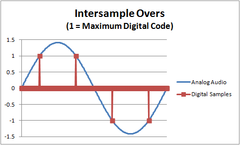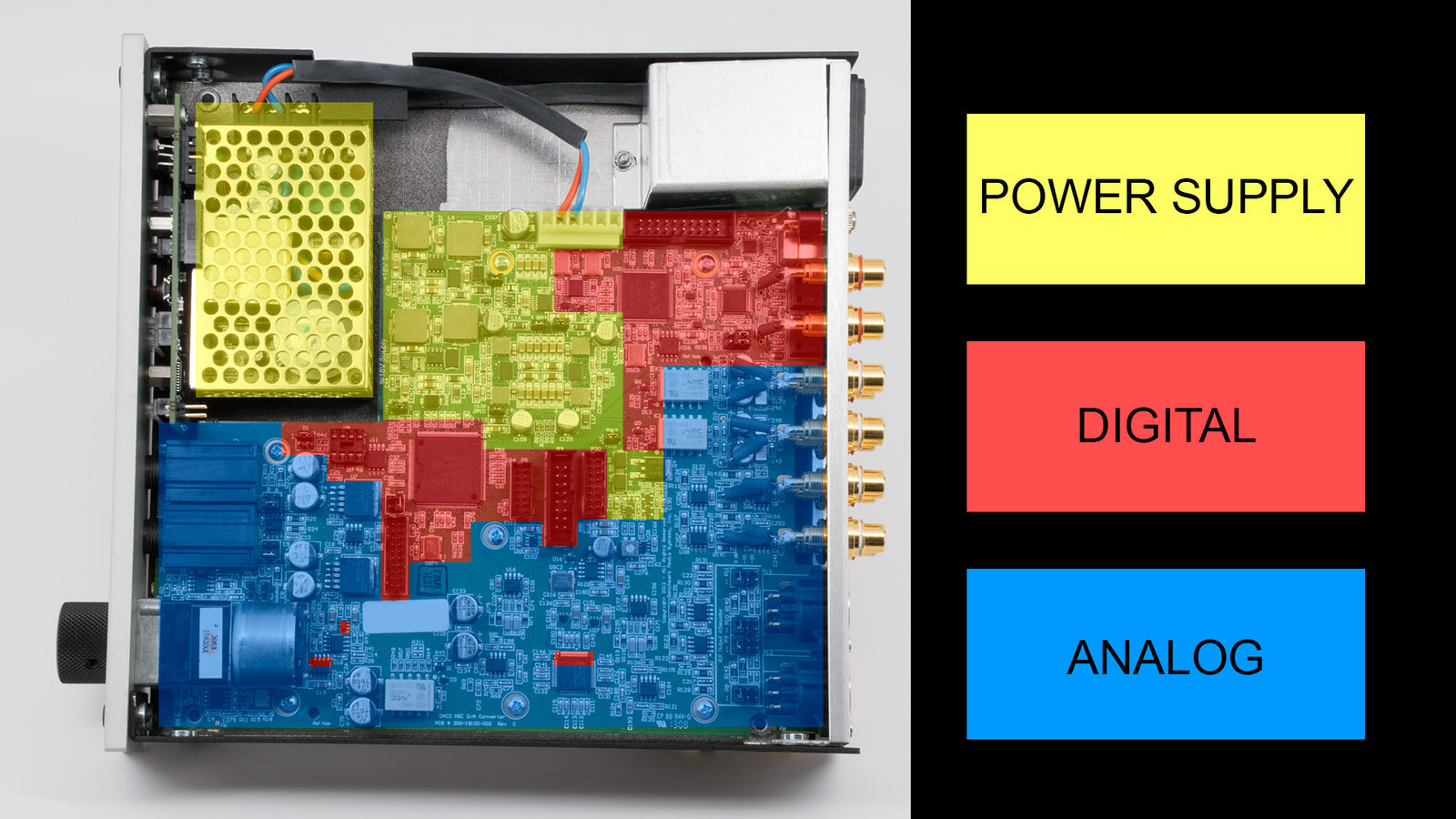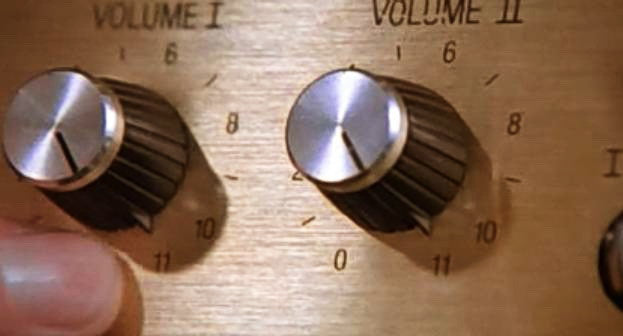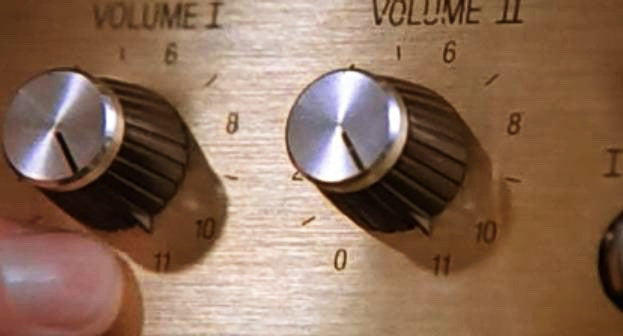Buy one component and save 10% on up to 2 cables. Buy 2 components and get 4 free cables. Free shipping on USA orders over $700. We are closed 1/1/26 and 1/2/26.
Buy one component and save 10% on up to 2 cables. Buy 2 components and get 4 free cables. Free shipping on USA orders over $700. We are closed 1/1/26 and 1/2/26.
Audio Application Notes
Interpolator Overload Distortion
by John Siau November 20, 2024
Most digital playback devices include digital interpolators. These interpolators increase the sample rate of the incoming audio to improve the performance of the playback system. Interpolators are essential in oversampled sigma-delta D/A converters, and in sample rate converters. In general, interpolators have vastly improved the performance of audio D/A converters by eliminating the need for analog brick wall filters. Nevertheless, digital interpolators have brick wall digital filters that can produce unique distortion signatures when they are overloaded.
10% Distortion
An interpolator that performs wonderfully when tested with standard test tones, may overload severely when playing the inter-sample musical peaks that are captured on a typical CD. In our tests, we observed THD+N levels exceeding 10% while interpolator overloads were occurring. The highest levels were produced by devices that included ASRC sample rate converters.
Intersample Overs in CD Recordings
by John Siau February 10, 2017
Intersample Overs are a Common Occurrence in CD Recordings
We have frequently used Steely Dan's Gaslighting Abbie from Two Against Nature in our listening tests. This is a spectacular CD recording with lots of dynamics and a low noise floor. Nevertheless, in a little over 5 minutes, this track has 559 intersample overs on the left track and 570 on the right track for a total of 1129. This means that there are about 3.7 intersample overs per second. The highest intersample over measures +0.8 dBFS. The track itself is not clipped, the 44.1 kHz sampling has simply captured peaks that exceed 0 dBFS. The following image shows the track with the intersample overs highlighted in red:
This track can be played cleanly by the Benchmark DAC2 and DAC3 converters. These converters accurately render the intersample peaks that were captured in the recording process. In contrast, conventional converters will clip each of the peaks highlighted in red. In this track the peaks coincide with hits to the snare drum. Converters that clip these peaks add a false brightness to the snare drum and alter its sound.
- John Siau
Inside the DAC2 - Part 2 - Digital Processing
by John Siau June 24, 2016
The Benchmark DAC2 is an audio digital-to-analog converter. This application note explains the proprietary digital processing inside Benchmark's DAC2 D/A converter. In part 1 of this series we made the case that 90% of the components in an audio converter are analog, and that about 90% of the "magic" happens in the analog processing. Nevertheless the 10% that is digital still makes an audible contribution to the sound of an audio D/A converter. This is especially true when the digital processing is complemented by a very pure and clean analog section. With a highly transparent analog section, some of the subtleties of the digital processing can become apparent.
Take a tour of the digital processing chain in the DAC2.
- John Siau
Benchmark DAC2 vs. DAC1 - Side-by-Side Measurements
by John Siau August 13, 2015


There was a 10-year time span between the introduction of the Benchmark DAC1 and DAC2 audio D/A converters. The DAC1 defined the state of the art when it was introduced in 2002. Thirteen years later, Enjoy the Music.com selected the DAC1 as one of the 20 most significant digital audio products from the past 20 years. Today the DAC2 defines the state of the art in audio D/A conversion. John Atkinson said that the "DAC2 offered one of the highest resolutions I have measured." Both products set performance benchmarks when they were introduced. In a sense, they provide snapshots of technological progress.
This paper shows high-precision side-by-side measurements of the DAC1 and DAC2 converters. These measurements show how technology has improved, and they show that there may be two or three audible differences between these two products.
Travel through 10 years of audio technology, learn the significance of audio measurements, and see what has improved in our quest for transparent audio reproduction.
- John Siau
Benchmark DAC2 vs. DAC1 - Is There an Audible Difference?
by John Siau August 06, 2015
Benchmark introduced the DAC1 in 2002 and it quickly became the best-selling 2-channel professional D/A converter. To this day, the DAC1 is a standard fixture in many recording studios, and it is also a central component in many high-end hi-fi systems. In August of 2015, Enjoy the Music.com selected the DAC1 as one of the 20 most significant digital audio products from the past 20 years.
It is easy to show that the DAC2 measures better than the DAC1 in almost every way. From a marketing perspective it would be tempting to claim that all of these measured differences make audible improvements, but this just isn't the case.
One reviewer, Gary Galo, recently had the opportunity to hear a DAC1 and DAC2 side-by-side. He noted some audible differences and we agree with his conclusions. We have had a great deal of experience listening to these converters side-by-side in our own listening room and we are familiar with some subtle differences.
This paper examines the subtle audible differences between the DAC1 and the DAC2. It also includes measurements that may help to explain these differences.
- John Siau
Why "Audio Goes to 11"
by John Siau April 17, 2014
Intersample Overs - Part 2

In my last post, "Audio that Goes to 11", I made the bold assertion that most of our audio recordings contain peaks that exceed the limits of our digital hardware. In this post I will show how this happens, and explain why this is a problem in PCM audio systems.
Do we throw out PCM and move to DSD?
Is there another solution?
- John Siau
Audio That Goes to 11
by John Siau April 10, 2014
Intersample Overs - Part 1

But, it's not just Spinal Tap recordings that go to 11, every recording you own may also go to 11! How is this possible? If 10 is the clip point of digital audio, how can there possibly be an 11? And, if we use Nigel's logic; if 10 is good, why isn't 11 better?
- John Siau







